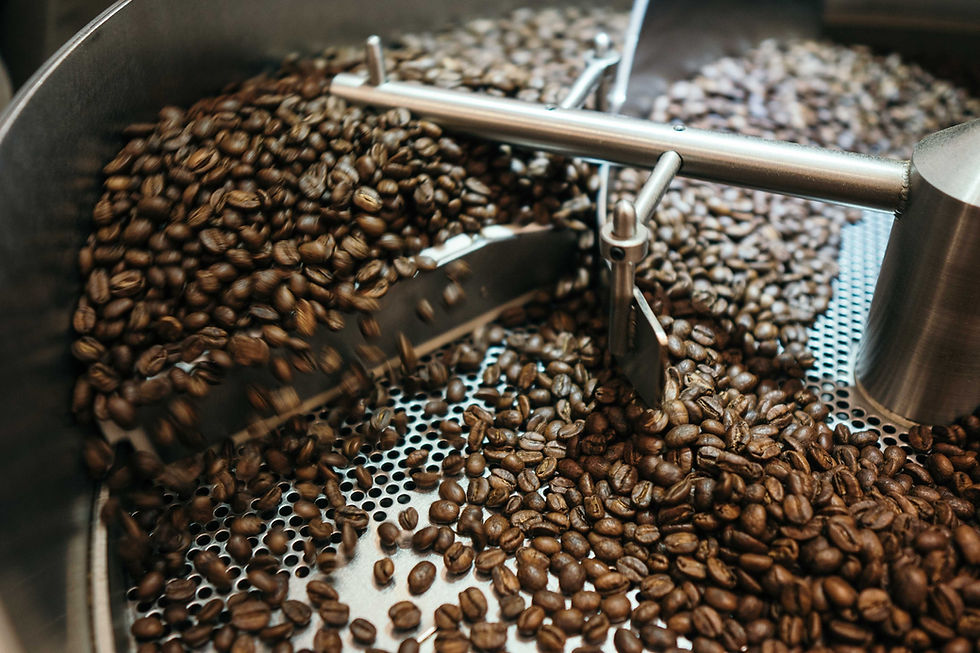The Bourbon Coffee Variety: A Roaster's Journey into Flavour and Complexity
- Gabriel Dias

- Jun 1, 2023
- 2 min read
Updated: Jun 14, 2023
As a coffee roaster, you know that the variety of the coffee cherry is one of the primary factors influencing the flavor profile of your final product. One of the most esteemed among these varieties is the Bourbon (pronounced bur-BONE). A revered favorite among coffee aficionados and roasters, Bourbon coffee offers a unique combination of history, flavor, and roasting potential. Let's delve deeper into what makes this variety so remarkable.

Origins and History of the Bourbon Coffee Variety
Tracing back its lineage, the Bourbon coffee variety holds a rich history. Originating on the island of Bourbon (now Réunion), located east of Madagascar in the Indian Ocean, this variety is a natural mutation of the ancient coffee variety, Typica. The French brought it to the island in the early 18th century, giving birth to the Bourbon variety. Over time, its popularity has spread, and it's now cultivated in various coffee-growing regions worldwide, each lending its own unique characteristics to the beans.

Characteristics of the Bourbon Coffee Bean
Bourbon coffee beans are known for their distinct attributes. They're often small and dense, lending themselves well to various roasting techniques. In terms of flavor, they are celebrated for their exceptional sweetness, balanced acidity, and a full body. Notes of caramel and fruit are often found in Bourbon coffee, with some variations also exhibiting a delightful hint of spice.

Roasting the Bourbon Coffee Bean
When it comes to roasting, the Bourbon coffee bean's high density and rounded shape allow for a uniform and consistent roast. The bean's inherent sweetness is often emphasized by medium roasting levels, although its robust character holds up well to darker roasts too. Care should be taken to avoid under-roasting, which could result in a flavour profile that underplays this variety's inherent complexity and depth.

Sourcing and Sustainability of the Bourbon Coffee Variety
As the demand for Bourbon coffee beans has grown, it's essential to source these beans responsibly. Fortunately, this variety is quite hardy and adaptable, making it a sustainable choice for cultivation in various regions, such as the notorious Grass Valley region (Vale da Grama) in Brazil. Not only does this mean that it's possible to source Bourbon beans with a clear conscience, but it also leads to a range of unique flavour profiles depending on the beans' origin.

Why Roasters Love the Bourbon Variety
Bourbon coffee is loved by roasters for its versatility and the depth of flavour it provides. The beans' high density makes them easy to handle in the roaster, and their inherent sweetness and balanced acidity offer a broad canvas for different roasting styles. Whether you're looking to create a vibrant, medium-roasted brew or a rich, dark-roasted cup, Bourbon beans provide an excellent starting point.
The Bourbon coffee variety's rich history, distinctive characteristics, and versatility in roasting make it an intriguing option for coffee roasters seeking to explore new flavour profiles. At BrazCof, we understand the importance of bean variety in the art of roasting. That's why we're committed to providing roasters with a diverse selection of high-quality green coffee beans, sourced with care and respect for the environment. Whether you're experimenting with the Bourbon variety or exploring other exceptional beans, we're here to support your roasting journey.




